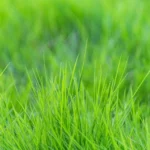
Rosemary is a plant that has a place with the Lamiaceae family. This plant is local to the Mediterranean coast. Rosemary develops on dry and sandy soils, with enough daylight during the day. It doesn’t endure amazingly low temperatures, over the top rainfalls and high stickiness. Rosemary is firmly identified with lavender, oregano and basil and simply like them – it is frequently utilized as zest. Rosemary can be utilized for the arrangement of pungent and sweet dishes. Other than for cooking, rosemary is broadly utilized in beautifying agents and medication. Rosemary is frequently developed for elaborate purposes.
The Ancient Greeks believed rosemary to be a memory aid. Students would often wear a branch in their hair.
Rosemary grows as evergreen bush that can reach 2 to 6 feet in height.
Rosemary also pairs well with sweets, especially those made with chestnuts.
Rosemary has needle-like evergreen leaves that are usually 0.8 to 1.6 inches long. Upper side of leaves is darker green in color. Lower side is grayish in color and it is covered with tiny hairs.
Unlike many other herbs, like basil, rosemary retains its fragrance even when dried and stored in glass.
Rosemary produces white, purple, pink or blue flowers. Flowering depends on the climate. Rosemary that is living in temperate climates blossoms during spring and summer. Rosemary that grows in warm climate produces flowers all year round.
Some rosemary plants can grow into shrubs reaching even five feet in height (or 1.5 meters).
Name “rosemary” is derived from Latin words “ros” and “marinus”, which mean “dew of the sea”. It refers to the coastal region that is occupied by this plant.
The best partner for rosemary is grilled meat: a branch can be used to brush the meat with salted and peppered oil.
Rosemary is mostly used as spice. It can be used both fresh and dried. People often add rosemary to dishes made of lamb, pork and chicken. It is also used in the preparation of jellies, jams and cookies. Rosemary is especially popular ingredient of Italian cuisine. Dried rosemary can be consumed as tea.
Rosemary can also be used to obtain a delicate, whitish honey.
Rosemary is rich in essential oil that has intense aroma. Because of that, rosemary is often used in aromatherapy and in the preparation of various lotions in cosmetic industry.
In medicine, a rosemary infusion can be used to heal wounds. When drunk, it helps with stomach aches and it’s a tonic when added to bath water.
Oil extracted from rosemary can induce poisoning when used in higher dose.
Christian legend tells the story of how during Mary’s trip from Bethlehem to Egypt with Joseph and Baby Jesus, she put her blue mantle on a rosemary bush, which where the herb’s blossoms got their color.
Rosemary is often used in folk medicine to enhance memory, to treat rheumatism, bruises, sores…
Rosemary is found in abundance throughout Mediterranean Europe, especially around the sea and hillsides, in windy regions with sandy terrain. It’s also diffused in Asia and Africa.
During the 16th century, people used burned rosemary to disinfect rooms (to eliminate germs).
In many Mediterranean cultures, rosemary is thought to bring luck to newlyweds, and baskets of the herb are offered to couples at their weddings.
Rosemary is a symbol of loyalty and love. In certain parts of the world, bride, groom and their guests wear branches of rosemary during wedding ceremony.
Rosemary leaves resemble small, dense needles attached to branches with a strong, unmistakable aroma.
Rosemary is sometimes used in the funeral rituals. Putting rosemary into the hands of deceased and scattering of rosemary on the grave symbolize remembrance.
To prepare marmalade of caramelized onions to keep in glass jars for the whole winter, don’t forget to aromatize it with rosemary and thyme.
Rosemary can reproduce either from the seeds or cuttings.
An essential oil made from rosemary leaves can be used in colognes, like Acqua d’Ungheria, which also contains orange, chamomile and bergamot.
People often cultivate rosemary because it does not require special care and because it can be trimmed to grow in various shapes. Rosemary attracts bees and facilitates pollination of other plants in the garden.
The title of Roman Polanski’s classic thriller, starring a young Mia Farrow as Rosemary.The title of Roman Polanski’s classic thriller, starring a young Mia Farrow as Rosemary.
Rosemary tolerates prolonged periods of drought. It cannot withstand overwatering because it leads to rotting of the root.
In Tudor England, rosemary symbolized a woman’s fidelity. But it was said that a man unable to smell its aroma, wasn’t worthy of love.
Rosemary is a perennial plant which means that it can survive more than 2 years in the wild.
Even before its virtues in cooking were discovered, the Romans used rosemary to aromatize wine.









